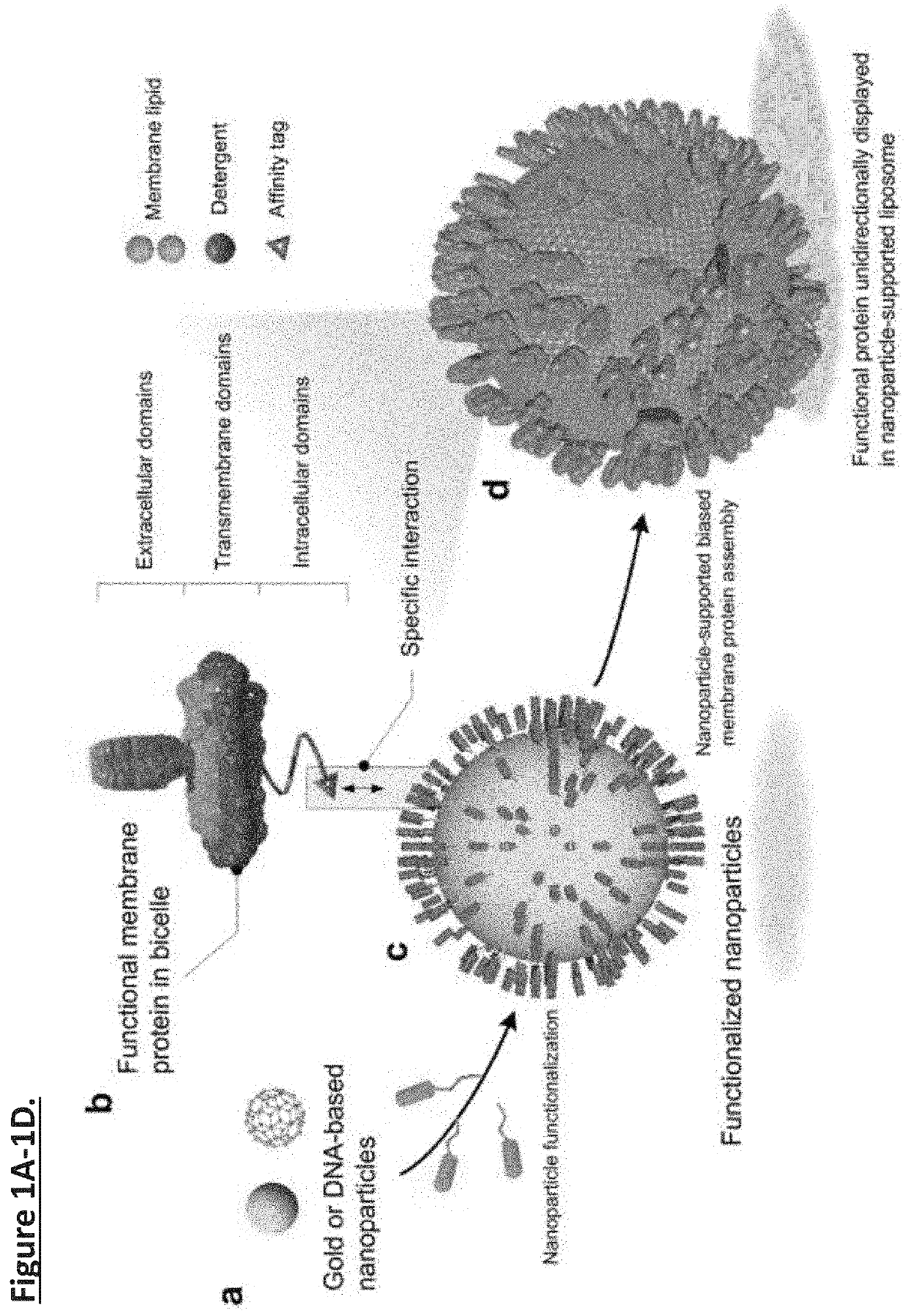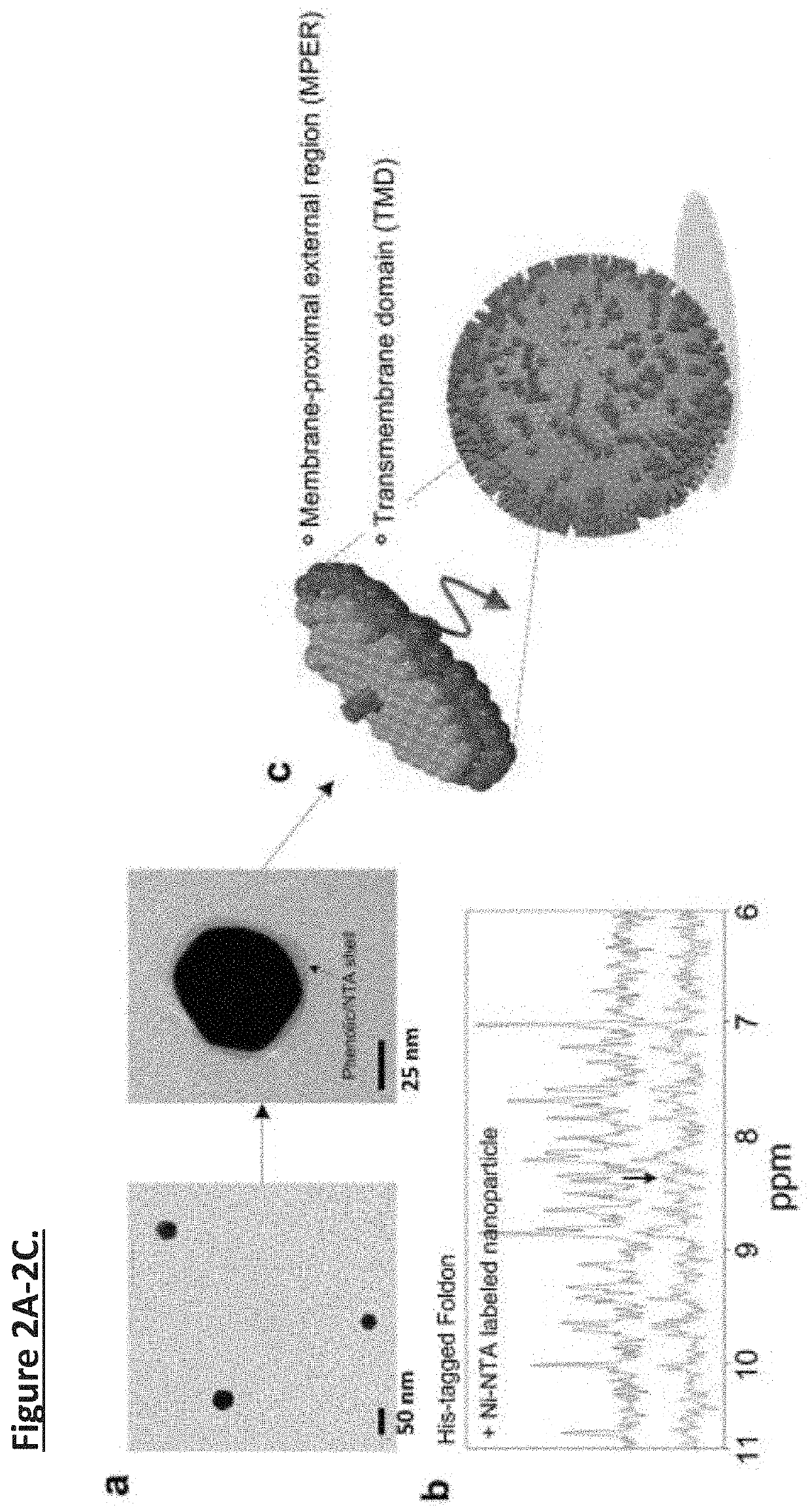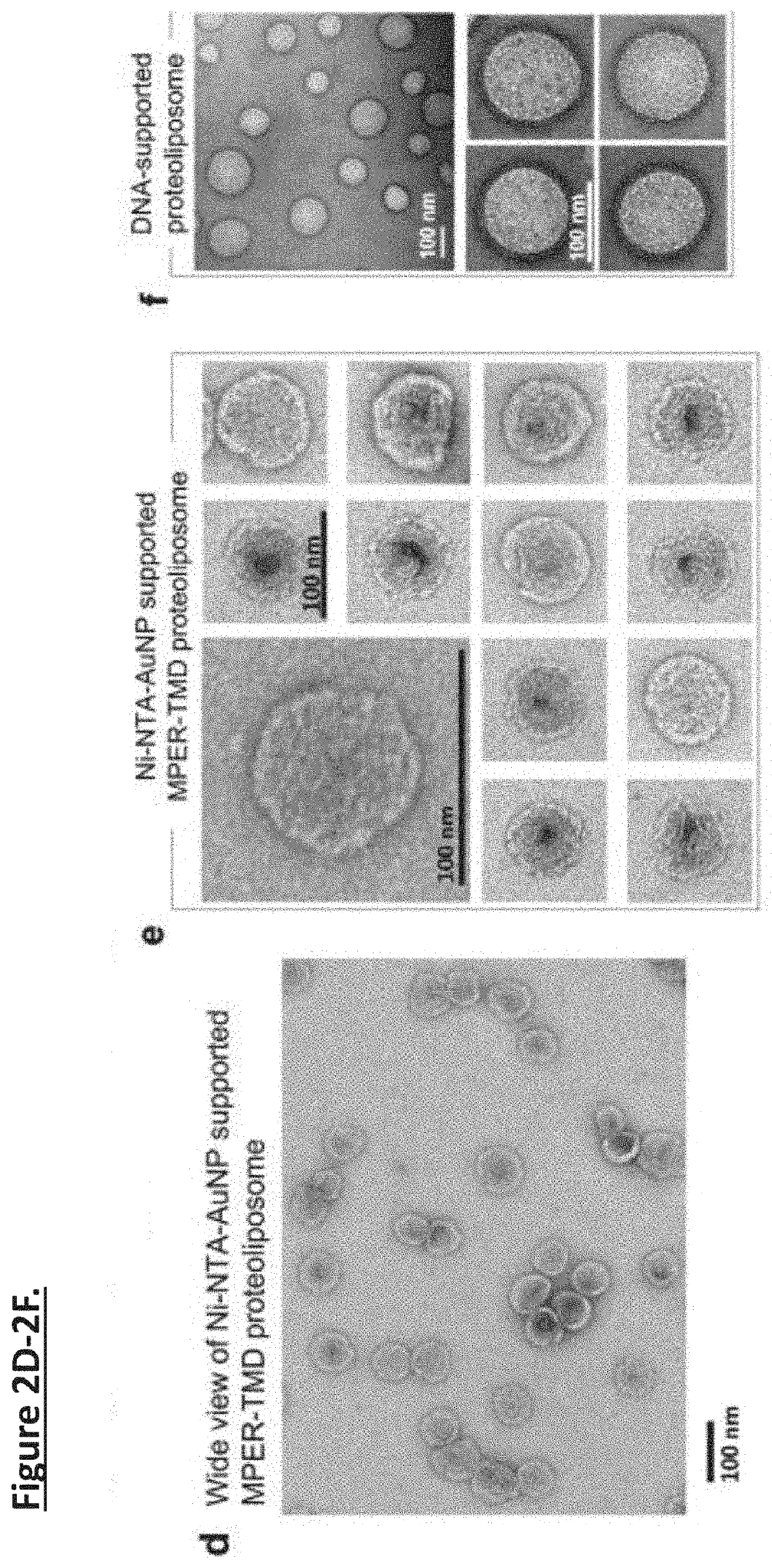Unidirectional presentation of membrane proteins in nanoparticle-supported liposomes
a technology of membrane proteins and nanoparticles, applied in the direction of viruses/bacteriophages, instruments, medical ingredients for detecting antibodies, etc., can solve the problems of difficult to make nanodisc samples in large quantities, difficult to present these proteins to immune systems to induce antibodies, and inability to incorporate transmembrane proteins
- Summary
- Abstract
- Description
- Claims
- Application Information
AI Technical Summary
Benefits of technology
Problems solved by technology
Method used
Image
Examples
example 1
Nanoparticle Preparations
[0035]Gold-polyphenol nanoparticle production and functionalization. 0.8 mg / ml of tannic acid (Sigma Aldrich) was prepared in ddH2O. Chloroauric acid (Sigma Aldrich) was added to tannic acid solution drop by drop to the final concentration of 0.4 mM. The mixture was incubated at room temperature with stirring at 800 rpm for 20 minutes to form polyphenol-stabilized gold nanoparticles (AuNPs). AuNPs were spun down at 12,000 g for 10 minutes. Pellet was then washed with ddH2O. Resuspended AuNPs in ddH2O was thoroughly sonicated before centrifugation again. The centrifugation and washing steps were repeated twice. AuNPs were then mixed with 0.04% glutaraldehyde (Electron Microscopy Sciences) and 0.5 mg / ml Nα,Nα-Bis(carboxymethyl)-L-lysine (Lysine-NTA) (Sigma Aldrich) at 45° C. for 1 hour. The conjugated NTA-AuNPs were then spun down and washed with ddH2O for three times. 0.5 mM NiCl2 was added to the NTA-AuNP solution. Ni-NTA-AuNPs were then washed with ddH2O fo...
example 2
[0036]The zeta-potentials were measured using a Zetasizer Nano-ZS (Malvern Instruments, UK) with a 633 nm He—Ne ion laser. The capsules were suspended in 10 mM phosphate buffer (pH 7.4) before adding different nanoparticle solutions. Measurements were repeated three times. The results were expressed as the mean and standard deviation obtained from the three measurements.
[0037]Interaction between Ni-NTA-AuNPs and His6-tag. Foldon is the C-terminal domain of T4 fibritin containing 27 residues and forms highly-stable trimer. Foldon with C-terminal His6-tag was cloned into the pET-15 vector and expressed in BL21(DE3) cells at 37° C. (induced with 1 mM isopropyl-β-d-thiogalactopyranoside (IPTG) for 6 hours). The protein was purified by Ni-NTA affinity (HisPur Ni-NTA resin, Thermo Fisher) and size exclusion chromatography (superdex 75 column, GE Healthcare). The NMR oneone echo experiment was used to record the 1D 1H spectrum of a 450 μl Foldon sample (30 μM Fold...
example 3
MPER-TMD Plasmid Construction, Expression and Purification
[0038]The MPER-TMD corresponds to a fragment of HIV-1 gp41 (clade D, isolate 92UG024.2) spanning residues 660-710; it contains the entire MPER (residues 660-683) and the TMD (residues 684-705). FLAG-tag and His6-tag sequences were added to the N- and C-termini of the MPER-TMD, respectively. The FLAG-MPER-TMD-His6 DNA was cloned into the pMM-LR6 vector as a fusion to the C-terminus of the trpLE sequence.
[0039]The MPER-TMD plasmid was transformed into E. coli BL21(DE3) for expression. Cell cultures were grown at 37° C. in LB media until OD600 reached 0.6, and cooled to 22° C. before induction with 100 μM isopropyl β-D-thiogalatopyranoside (IPTG) at 22° C. for overnight. The MPER-TMD was extracted from inclusion bodies, cleaved by cyanogen bromide, and purified by HPLC as described previously. The purified MPER-TMD were lyophilized and validated by SDS-PAGE and MALDI-TOF mass spectrometry.
PUM
| Property | Measurement | Unit |
|---|---|---|
| size | aaaaa | aaaaa |
| volume | aaaaa | aaaaa |
| volume | aaaaa | aaaaa |
Abstract
Description
Claims
Application Information
 Login to View More
Login to View More - R&D
- Intellectual Property
- Life Sciences
- Materials
- Tech Scout
- Unparalleled Data Quality
- Higher Quality Content
- 60% Fewer Hallucinations
Browse by: Latest US Patents, China's latest patents, Technical Efficacy Thesaurus, Application Domain, Technology Topic, Popular Technical Reports.
© 2025 PatSnap. All rights reserved.Legal|Privacy policy|Modern Slavery Act Transparency Statement|Sitemap|About US| Contact US: help@patsnap.com



